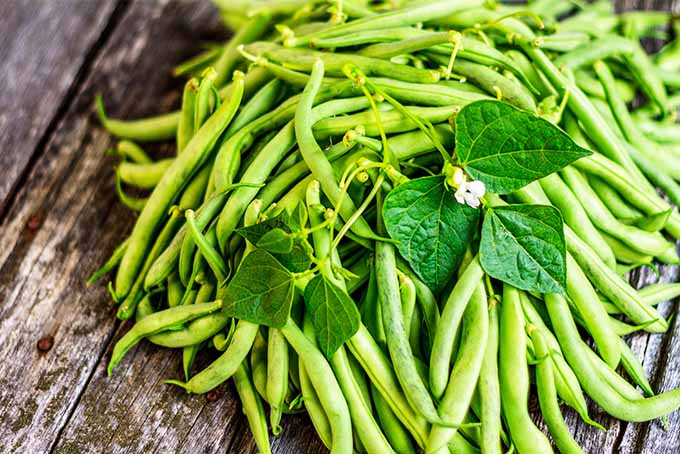Fine beans are also referred to as green beans or bush beans. The scientific name is Phaseolus ulgaris. You can grow fine beans any time of the year here in Zimbabwe. It takes anything from around 2 to 2 and a half months for green beans to reach maturity. The global titan of green beans production is China followed by Indonesia and Turkey respectively. Belgium, the UK, and the Netherlands are the biggest importers of green beans.
Importance Of Fine Beans
The nutritional value of green beans is part of why it is an important crop. Green beans are laden with vitamins, antioxidants, and fibre. This makes them essential to dealing with conditions such as heart disease and cancer.
Production Considerations
Land Preparation
The soil must be adequately ripped, ploughed and harrowed. Ridging is also vital – this is because raising the beds is a recommended farming approach for most crops. A well broken down and finely constituted soil profile is what green beans need for uncapped growth.
Favourable Climate
Green beans can thrive in virtually any climate – winter is however the best time to achieve optimum growth. Thus it can be smart to grow them from the period spanning from April to July. Word of caution here though, beans can be adversely affected by frosty conditions. The reason why green beans can do well in our Zimbabwean winter is that there tends to be a healthy balance of considerably warm temperatures even during that winter. The best temperatures for them to grow well are in the range of 14 degrees Celsius to 21 degrees Celsius. It is expedient that temperatures never get to go past 30 degrees Celsius.
Soil Requirements
Generally, green beans are quite sensitive to a lot of things – soil type is one of them. Just like many crops, green beans require soils with good drainage. Optimum pH should be anything between 6 and 6.5. Just like several other crops, soil fertility is important which means the addition of organic material will most likely be necessary. However, strike a good balance; not too little and not too much should be added and incorporated into the soil. The best type of soil for green beans is sandy loam soils – they have good water retention and drainage at the same time.
Sowing And Planting
There is a significant gap between the in-row and inter-row spacing of green beans plants. The in-row spacing of 5 centimetres is recommended with an inter-row spacing of 45 centimetres. The spacing I have highlighted is just a guideline otherwise the total number of plants you wish to have per hectare weigh in on that. Typically, a healthy number of plants per hectare is 30000. When planting, the seeds should be placed at depths of between 1 and 1.5 centimetres.
Water Requirements
Green beans require significant amounts of watering. Always ensure that the plants are sufficiently watered so that they are not affected by say, extreme heat. After germination, irrigation can be done every 10 days whereas after flowering it can be done every 1 week to 10 days.
Pests, Diseases And Weed Control
Aphids and bollworms are some of the pests that farmers should look out for. Other pests include nematodes, beetles, and red spider mites. Damping-off and bacterial blights are some of the diseases to be wary of. Weeding can be by mechanical means or chemical ones, the choice is yours. Two things to note regarding weeding; one, weed as and when needs be (the state of the field informs the frequency), two, be cautious when weeding to avoid damaging the plants (especially the roots).
Harvesting And Storage
Harvesting is labour-intensive since it is done by hand – it is said to be the best approach for fresh market-bound beans. To harvest one hectare of green beans you will require at least 50 individuals. You have to ensure these individuals are all available during the harvesting period – the moment you start harvesting, every day counts. Experts say that if you miss just one day the losses can be catastrophic. If the green beans are not meant to be fresh farm produce you can go ahead and harvest by mechanical means. Harvesting early in the morning is usually advisable for most crops; green beans are no exception. Recommended storage temperature is an average of 5 degrees Celsius – this can maintain freshness for almost 2 weeks.
Important Factors To Consider
As many as 15 tonnes can be harvested from one hectare of fine beans. Average yields can start from around 8 tonnes per hectare going upwards. Export prices can average US$1.50 per kilogram. Generally, you can get at least a 20 per cent profit per hectare. Operating costs do vary though from farmer to farmer. In Zimbabwe, you can sell them for around US$3 per kilogram.
Some of the common varieties that can be grown are Contendor, Nelson, and Espada. Addition of fertilizers is important – nitrogen, phosphorus, and potassium are in indispensable. This is done strategically of sowing or planting and at later stages during growth.
I have done many articles on export crops to grow in Zimbabwe. There is something that I had not mentioned which is of utmost importance. Granted, that these crops I have been talking about can be sold locally but my wish is that you set your sights on the export market. What I had not mentioned has to do with certification – to smooth your farming of export crops there is a certification that is required i.e. your farm ought to be certified. There is what is called GGAP – standing for Global Good Agricultural Practices; you need GGAP certification. Then we also have SMETA – standing for Sedex Members Ethical Trade Audit. This is a global powerhouse when it comes to ethical audits. Being certified by them is pivotal to your export farming business. ZimTrade can assist you in getting to know more about this and other related issues.









I like this post here on How to Start Fumigation Service business in Zimbabwe. Indeed there is a lot of business opportunities in this industry. I’m a Zimbabwean citizen staying in South Africa and I’m already in this Pest control business. I have a registered company called Moonlighting Pest Control and Cleaning services Pty Ltd here in the SA. I can say so far so good. I was hoping to expand my business that is back home Zimbabwe but I’m at a standstill because of Covid-19.
Hopefully things will normalise soon maybe we will be able to come home and help our government to create employment in that regard.
F B Manatse